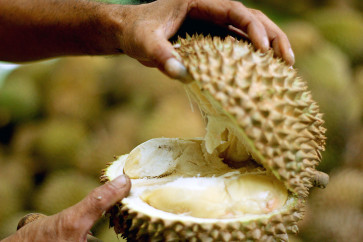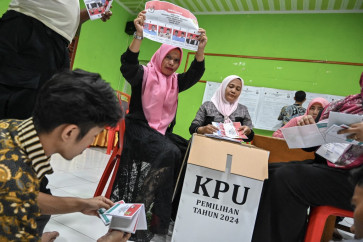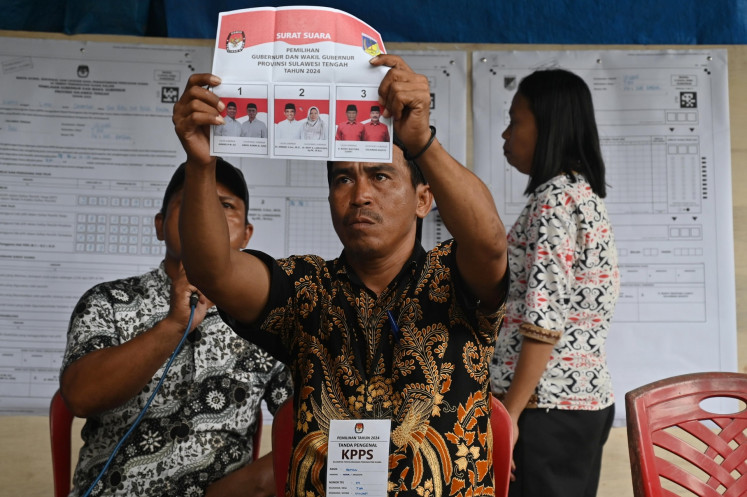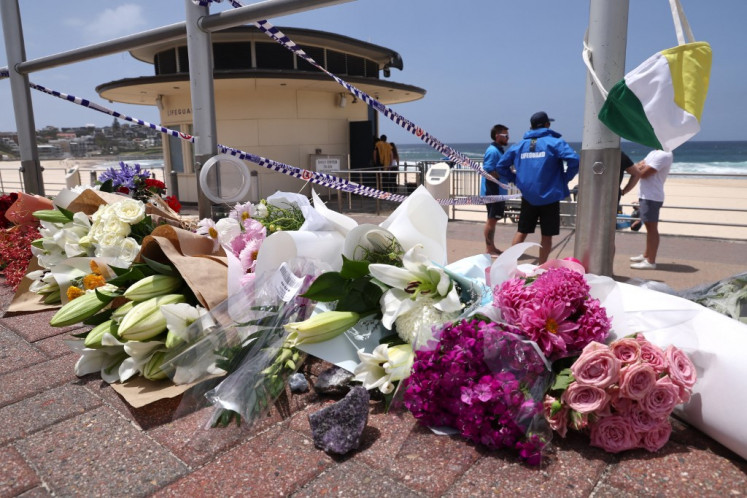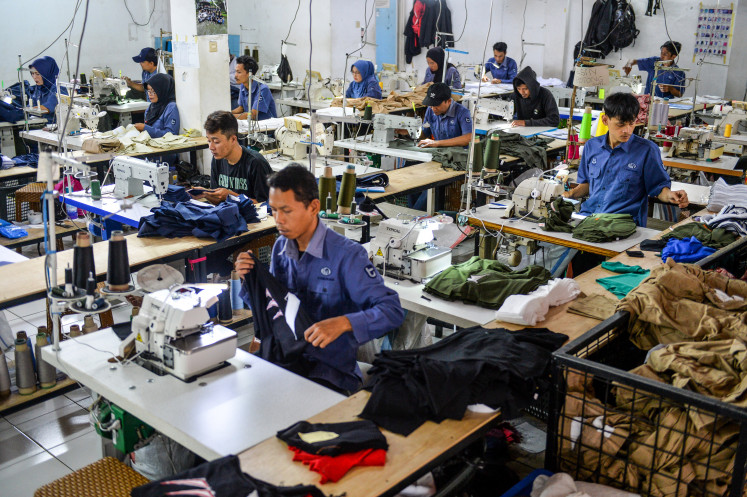Popular Reads
Top Results
Can't find what you're looking for?
View all search resultsPopular Reads
Top Results
Can't find what you're looking for?
View all search resultsSylvia Asih Anggraeni: A Javanese champion of Sumbanese woven textiles
(Courtesy of Sylvia Asih Anggraeni)Sylvia Asih Anggraeni displays such passion
Change text size
Gift Premium Articles
to Anyone
(Courtesy of Sylvia Asih Anggraeni)
Sylvia Asih Anggraeni displays such passion. The woman comes from Purworejo, Central Java, but her admiration for authentic Indonesian fabrics has brought her to the world of woven textiles, especially those from Sumba.
Born in Purworejo, Central Java, in 1953, her introduction to tie-dyed woven fabrics, known as tenun
ikat from Sumba in East Nusa Tenggara (NTB), was different from how she learned about woven cloths from other regions.
In Salatiga, Central Java, when she was at college, she got firsthand explanations from Sumbanese people about the woven pieces dubbed the 'blankets of the gods'.
'I promptly fell in love after observing the great variety of motifs with their deep nuances of meaning. It also takes a long time to produce Sumbanese woven cloths. I've witnessed the great perseverance of Sumbanese women, who don't seem to care about the economic value to be earned. Their love of beauty and heritage comes before their economic expectations,' Sylvia says.
After falling in love with the textiles of Sumba, she later fell in love with a young man from Sumba, Umbu Mehang Kunda, who became her husband. Umbu, died in 2008, was a House of Representative legislator from 1987 to 2000 and later the regent of East Sumba. The airport in Waingapu, East Sumba is named after him.
'I'm proud to wear this cloth. It's an exotic piece woven by skillful craftspeople imbued with love,' said Sylvia, clad in a Sumbanese sarong. Currently the owner of the Annahida Sumba dress gallery in Cibubur, East Jakarta, Sylvia takes even greater pride in the textiles of Sumba since they have become globally marketed.
To this day, the weavers of Sumba have continued to use their traditional methods to produce textiles of immense artistic value.
Without their passion for the ancestral craftwork, according to Sylvia, they would have abandoned the weaving profession because their income is not proportional to the time and energy spent.
A weaver takes months to finish a single piece, let alone the time needed to gather materials from nature, especially natural dyes. To make high-quality Sumbanese cloths, a weaver has to work hard to obtain natural materials like the roots of mengkudu (Morinda citrifolia) and indigo leaves, while spinning yarn from cotton.
The other feature that arouses Sylvia's great admiration for the cloths of Sumba is the symbolic
representation of various moral messages.
'Every motif has a deep meaning. It's not just any picture or design,' she noted. For instance, horse and dragon motifs symbolize masculinity, heroism and the strength of high social status.
The other symbolic designs are crocodiles for loyalty, honesty and awareness, shrimps and snakes for eternal life in the hereafter, red crocodiles and tortoises for nobility and immortality, cockatoos for deliberation, monkeys and their infants for nature conservation, and deer for glory, bravery and beauty.
When Umbu was the regent of East Sumba, Sylvia had many opportunities to promote Sumbanese woven products, foster East Sumba's craftspeople and weavers, help their marketing and arrange programs for weaving-skill exchanges between craftwork studios.
She also created a monumental work, which was a Sumba tie-dyed woven sheet over 50 meters long. This cloth, designed for men, made the record books as the longest woven material of its kind and the first in the regency.
It entered the list of the Indonesian Museum of Records (MURI) in 2008 with the official name of Hinggi Humba A'nda Ukurungu, meaning 'the road for everybody to pass'. This piece was hand woven by members of the Ori Angu Studio in Lambanapu, East Sumba.
Besides Hinggi Humba, a 24-meter sarong for women was also recorded under the name of Lawu Pahikkungu Maronongu or 'a beautiful garment for angels'. East Sumba has two types of woven cloths, hinggi for men and lawu pahikkungu or pahudu (embroidered sarong) for women. Both traditional textiles have an important role in the socio-cultural life of the local community.
Sylvia, who holds a graduate degree in development studies from the Bogor Institute of Agriculture, is also knowledgeable about the functions of Sumba's woven fabrics based on local customs. She refers to the Sumbanese tradition that hinggi and lawu constitute a means of exchanging gifts in wedding and funeral ceremonies as well as a token of appreciation or just as a souvenir.
The hinggi is also used as a shroud to wrap a corpse. Physically this cloth can smother the smell of the dead body and spiritually, in line with the Marapu faith, the indigenous belief of the Sumba people, a high-quality hinggi covering the remains signifies the clothes of the deceased in the hereafter.
Sylvia is not a cloth collector in the real sense. She claims to be only fond of keeping artistic and unique items.
Her Sumbanese textiles have been collected through purchases from people who came to her needing money, mostly while she was the East Sumba regent's wife. Because she wanted to help those people, she said, she sometimes ended up with pieces she did not particularly like.
The mother-of-three, and grandmother to seven grandchildren, said that she also sometimes bought Sumbanese textiles in exhibitions that did not attract many buyers as a gesture of support.
With about 200 examples of woven material from Sumba, of various sizes and motifs, now kept in the SME Gallery as well as in her private gallery, Sylvia has deep concerns about the 'hijacking' of Sumbanese patterns, the mass production of copies of Sumba's textiles in Jepara in Central Java and their low prices.
'How can this happen while we have patented the motifs of East Sumba's textiles? We have to respect the weavers of Sumba. It's really hard to maintain the dignity of cultural heritage in this overly pragmatic, globalized era,' she said.


